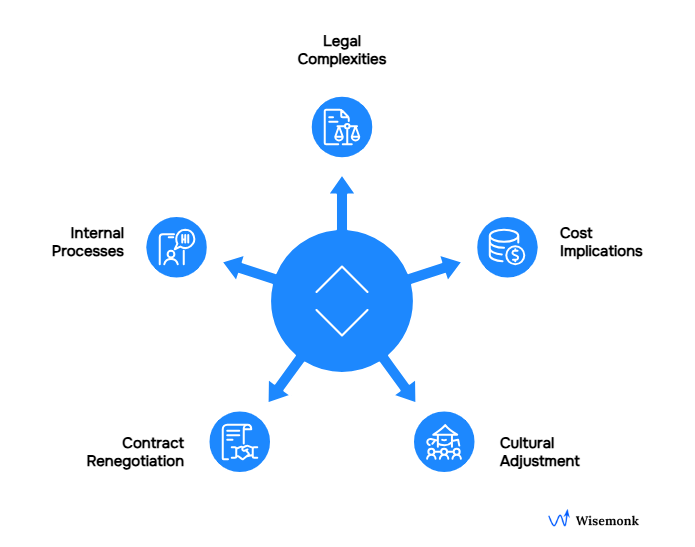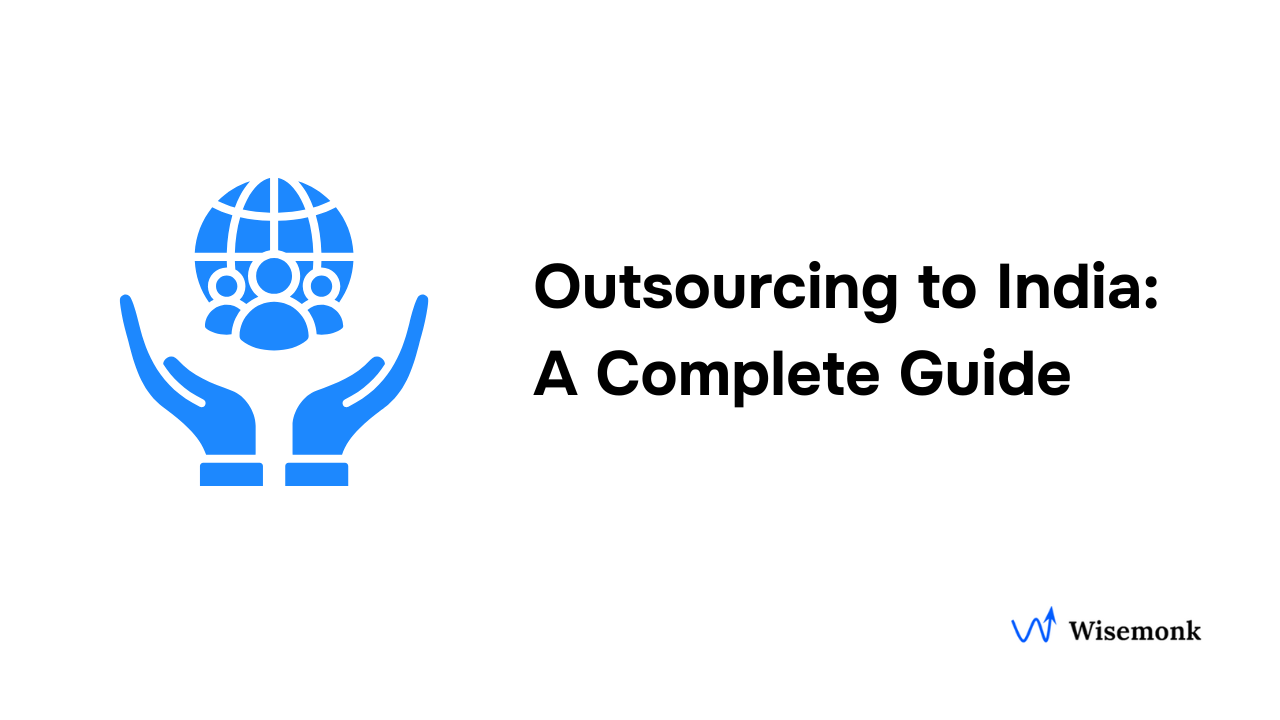- Converting contractor to employee involves reviewing roles, understanding local labor laws, drafting employment contracts with salary/benefits, onboarding through HR systems, and clear communication throughout the process.
- Key differences: Contractors work independently for multiple clients managing their own taxes/benefits, while employees work under company supervision receiving salaries and statutory benefits with legal protections.
- The benefits of converting a contractor to an employee are greater stability for your operations, enhanced control over work and schedules, stronger protection for your intellectual property, better talent retention and reduced legal risks.
- The challenges of converting a contractor to an employee include navigating complex labor and tax laws, managing higher costs for benefits and payroll taxes, renegotiating contracts carefully, preparing HR systems for onboarding.
Need help with contractor-to-employee transition? Reach out to us today!
Discover how Wisemonk creates impactful and reliable content.
.png)
Looking to convert a contractor to an employee? But not sure where to start, You’re not alone. U.S. businesses often struggle with IRS worker classification rules, multi-state labor laws, and the risk of steep misclassification penalties. Getting it wrong can lead to back taxes, fines, and even legal disputes.
In this article, we’ll break down the key differences, step-by-step guidance, benefits, challenges, and what to consider before making the switch. Let’s get you the clarity and confidence you need to move forward!
What is the difference between contractors and employees?[toc=Contractors vs. Employees]
When building a global team, understanding the distinction between contractors and employees is crucial. In our experience guiding global companies, we have seen many organizations leverage an Employer of Record (EOR) to help classify and manage these roles, especially as they expand into new markets. Here’s a clear comparison:
We have an article on "Contractors vs. Employees in 2025" that can help you understand the differences.
How to convert a contractor to an employee?[toc=How to convert]
Making the switch from contractor to employee can feel like a big step, but with the right approach, it’s a smooth and rewarding conversion process. Based on our extensive experience guiding companies through this transition, here’s a straightforward roadmap to help you get started:
- Confirm Worker Classification: Start by making sure the worker’s current role really fits that of an independent contractor. Check local labor laws to confirm they haven’t been misclassified. This is important so everything is legally sound and you avoid surprises down the road. For an official perspective, check out the IRS explanation on worker classification titled "Independent contractor defined".
- Assess Legal and Business Implications: Next, take a close look at the legal and financial side. Misclassifying workers can lead to costly fines, back taxes, and penalties, so understanding these risks is crucial.
- Discuss and Make the Offer: Have an open conversation with the contractor. Explain why the conversion is happening and what benefits full-time employment brings, like stability and perks. Then present a formal offer outlining salary, benefits, and their new responsibilities. Clear communication at this stage helps smooth the way.
- Update Records and Legal Documentation: Once they accept, draft a new employment contract that clearly spells out everything from pay to reporting lines. You’ll also need to update your payroll, tax filings, and insurance registrations.
- Integrate and Onboard: Bring them into your company fully with onboarding, set them up on payroll, ensure completion of the employees withholding certificate (Form W-4) for proper tax withholding, give access to necessary systems, provide equipment, and introduce company culture and policies. Regular check-ins during this period help a smooth transition.
- Ensure Ongoing Compliance: Finally, keep monitoring to ensure all legal, tax, and employment regulations continue to be met. Maintaining transparency about roles and compensation is key to a positive ongoing working relationship.
Having guided several global organizations through this process, we’ve found that a thoughtful, well-communicated approach not only ensures compliance but also sets the stage for long-term success.
Ensure your new employees are set up for success with clear, compliant contracts. Learn more in our article on "Employment Contracts Explained"
When should you convert a contractor to an employee?[toc=When to Convert]
With our experience in helping companies streamline global payroll and compliance, here’s when you should consider converting a contractor to an employee:
- Consistent need for their services: If the contractor is performing an ongoing, essential role for your business, converting them to an employee ensures stability and consistency. Employees typically provide the reliability needed for daily operations, unlike contractors who may prioritize their own business.
- Greater oversight and behavioral control: When you need to direct how, when, and where the work is performed, it shows a level of behavioral control that usually applies to employees. In these situations, it is better to classify workers properly as employees, which also allows you to set and manage an employee’s schedule more effectively.
- Full-time commitment: If the contractor is working close to or at full-time hours for your company, they may essentially be functioning as an employee. Employees also enroll in benefits and pay into social security, providing the same convenience to both employer and worker.
- Retain top talent and valuable assets: For contractors who add significant value, offering employee status with benefits enrollment, job security, and clear career growth can help maintain loyalty. This protects your company’s most valuable assets and lowers the risk of competitors attracting them away.
What are the benefits of converting a contractor to an employee?[toc=Benefits]
With our experience in helping companies manage contractor-to-employee conversions globally, here’s what you gain by making the switch:
- Greater stability: Ensures continuity in operations, especially when workers are economically dependent on your company rather than juggling multiple clients.
- Enhanced control: Allows oversight of the work process and employee’s schedule, supporting classification rules and simplifying HR team management of employee information.
- Stronger IP protection: Provides legal safeguards for intellectual property, with new contracts and policies set during the onboarding process for lasting protection.
- Improved talent retention: Attracts and keeps top performers by offering job security, benefits enrollment, career growth, and HR support.
- Increased loyalty and dedication: Employees show stronger commitment when backed by clear expectations, new contracts, and ongoing HR team support.
- Risk reduction and compliance: Prevents legal fines by following classification rules. Employees file correct tax forms, employers manage withholding taxes, and labor law compliance is maintained.
Keep your employees engaged and loyal by providing the right benefits. Discover how in our article on "Employee benefits and insurance"
What are the challenges of converting a contractor to an employee?[toc=Challenges]
Transitioning a contractor to an employee can be a smart move, but it’s not without its hurdles. Having guided several organizations through this process, we’ve seen a few common challenges that companies should be prepared for:

- Legal and Compliance Complexities: Navigating different labor laws, tax regulations, and statutory requirements across countries can be daunting. Each jurisdiction may have unique rules about notice periods, benefits, and employment contracts.
- Cost Implications: Bringing someone on as an employee often means higher costs due to benefits, payroll taxes, and statutory contributions. Budgeting for these changes is essential.
- Cultural and Operational Adjustment: Contractors are used to a certain level of independence. Shifting to an employee role may require changes in mindset, work habits, and integration into company culture.
- Contract Renegotiation: Updating agreements and negotiating new terms can be sensitive. Both parties need to be clear about expectations, compensation, and responsibilities.
- Internal Processes and Systems: Onboarding full time employees requires more administrative work, setting up payroll, benefits, and compliance checks. Ensuring your HR systems are ready is key.
Want to avoid costly misclassification penalties and stay compliant while converting contractors to employees? Make sure your HR processes align with federal and state requirements, Check out our article on "HR legal compliance best practices"
What should you consider before converting a contractor to an employee?[toc=Consideration]
Having guided numerous organizations through this process, we’ve identified that partnering with an Employer of Record (EOR) can help address these factors:
How can Wisemonk help with Contractor-to-Employee conversion?[toc=How Wisemonk helps]
Wisemonk is a leading Employer of Record (EOR) dedicated to making it easy for global companies to hire, pay, and manage talent in India, without the need to set up a local entity. When you’re ready to convert contractors to employees, we take care of the entire process so you can focus on growing your business.
Here’s what we do for you:
- Legal Employment: We become the official employer of record in India, so you don’t need your own legal entity or local law.
- Compliance Management: We handle all statutory registrations, filings, and ongoing compliance requirements.
- Payroll Administration: We manage end-to-end payroll processing, tax withholding, and statutory contributions.
- Benefits Administration: We administer both mandatory and supplementary benefits programs for your team.
- HR Documentation: We provide compliant employment contracts and company policies.
- Risk Mitigation: We assume legal employer responsibilities and manage all associated compliance risks.
Beyond EOR in India & contractor-to-employee conversion, we also offer payroll outsourcing, talent sourcing, dedicated HR support, background verification, equipment procurement, company registration, compliance advisory, and support for setting up Global Capability Centers (GCCs) in India. With us, you get a complete workforce solution for your operations in the region.
Ready to simplify your contractor-to-employee transition? Contact us now, let Wisemonk make your global team stronger, together!





.webp)
.webp)